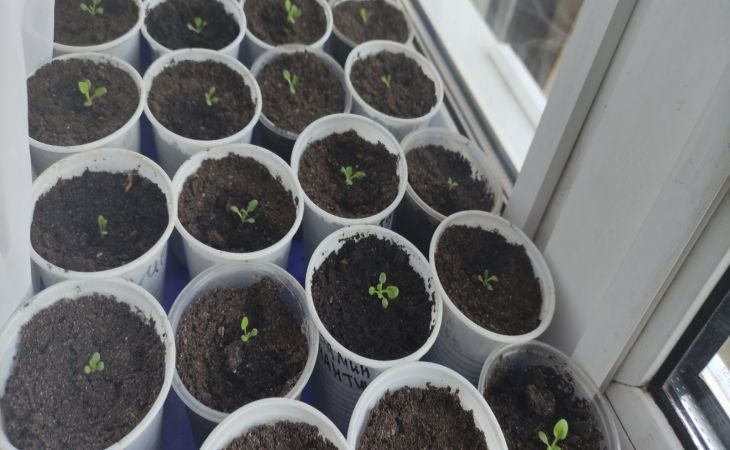Creating healthy and strong seedlings is the key to a rich future harvest. However, for many beginning gardeners, this can be a difficult task.
Today we will tell you how to properly harden, fertilize and water tomato seedlings to achieve maximum results.
Let us pay attention to the words of the expert of the online publication "Belnovosti" and scientist-agronomist Anastasia Kovrizhnykh.
Hardening off tomato seedlings
Hardening off tomato seedlings is an important stage in preparing them for transplantation into open ground.
The process allows plants to get used to changing environmental conditions, strengthens their stems, and makes them more resistant to weather influences.

How to Properly Harden Tomato Seedlings
- Gradual hardening. Start hardening the seedlings 1-2 weeks before the expected date of transplanting into open ground. Gradually adapt the plants to new conditions, starting with a short stay in the open air and gradually increasing the time.
- Selecting favorable conditions. Start hardening on a warm, windless day. Place the seedlings outdoors for several hours a day, preferably in the shade or partial shade. Avoid strong temperature changes and cold nights.
- Increase Time Outdoors: Gradually increase the amount of time your seedlings spend outdoors each day. Start with 1-2 hours and gradually add 1-2 hours per day.
- Increasing sunlight intensity. It is important that the plant gradually gets used to sunlight. Start with indirect sunlight or partial shade and gradually increase the light intensity.
- Sufficient watering. During hardening, monitor the soil condition and maintain an optimal moisture level. Tomato seedlings should be well moistened, but not over-watered.
- Protection from extreme weather conditions. In case of strong winds or low temperatures, protect the seedlings, for example by covering them with opaque materials or moving them back indoors.
Proper hardening will help tomato seedlings adapt to external conditions and ensure their successful transplantation to an open area.
Gradualism and constant monitoring of plants will help to avoid stress and create favorable conditions for their healthy growth and development.
Why do you cut off the lower leaves on seedlings?
Cutting off the lowest leaves on seedling sprouts serves several purposes.
- Stimulates growth. Removing lower leaves allows the plant to focus its energy resources on growing the upper parts. Promotes the development of stronger, healthier stems and leaves, which will ultimately lead to better seedling development.
- Disease prevention: The lower leaves of seedlings may be closer to the soil, where pathogens and disease-causing organisms may be present. Removing leaves reduces the risk of seedlings becoming infected.
- Improved air circulation. Removing lower leaves helps improve air circulation within the seedlings. Reduces the likelihood of mold and fungal diseases, as freer air movement promotes dryness and reduces humidity.
It is important to note that cutting off the lower leaves should be done carefully so as not to damage the sprout or stem of the seedling. It is better to use sharp and clean tools to avoid possible infections. In addition, it is recommended to cut only the very bottom leaves, without affecting the rest of the healthy leaves of the plant.
Tomato seedlings need proper care, which includes hardening, fertilizing and watering. Hardening allows the plant to adapt to environmental conditions and increase resistance to diseases.
Cutting off the lower leaves helps improve air circulation and reduce the risk of fungal diseases. It is also important to monitor the temperature and humidity in the room where the seedlings are grown to create optimal conditions for growth.
Earlier we wrote about why summer residents collect sunflower seed husks.









